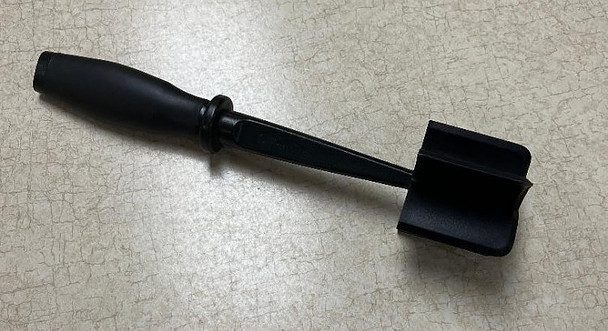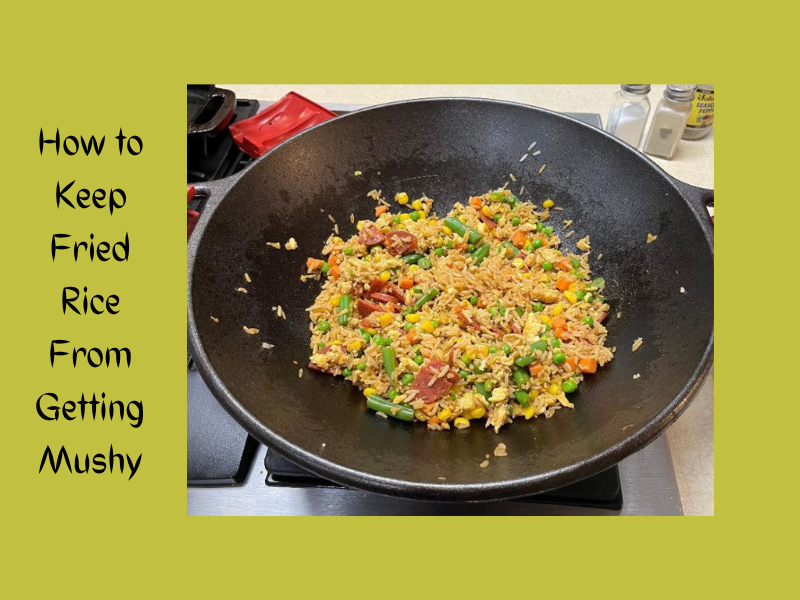Who’s wondered, “Can I use fresh rice to make fried rice?”
Or do I have to use day old?
What if I don’t have any leftover rice?
Am I out of luck? Or is using leftover rice a myth?
Let’s find out.
Table of Contents
How Do I Keep My Fried Rice From Getting Mushy?
The way you cook your rice matters when making fried rice. Long-grain rice such as Basmati or Jasmine works best. And short-grain rice cooks wetter and is more likely to become mushy when frying. Before cooking, be sure to rinse the rice and use the correct water to rice ratio. And when the rice is finished, fluff it up, aerate, and let it cool by storing it in the refrigerator. Finally, break up the rice once you add it to the wok or frying pan, so it doesn’t get clumpy. Other factors include not overcooking the rice or overcrowding the pan. Or cooking foods with a high moisture content separately.
1. Use the Right Kind of Rice
Using the right kind of rice is crucial. When the rice is too wet, the result will be mushy fried rice. Long-grain rice, such as Basmati or Jasmine, absorb less moisture and make a better choice for fried rice.
I have both but mainly use Jasmine.
2. Rinse the Rice
Rinsing the rice is also an important step. You are removing the starch that makes rice sticky. It’s much like adding a bit of oil to the water when cooking pasta to keep it from being sticky; that’s what rinsing off rice does.
Put the rice in a bowl and fill it with water. The water will be cloudy. Dump the rice and water out in a strainer, then put the rice back in the bowl. Repeat this process until the water covering the rice is clear. Strain it one last time, and you are ready to cook it.
3. Use the Correct Ratio of Water to Rice
Most directions tell you to use more water than rice.
For example, my Jasmine rice package gives a ratio of 1 cup rice to 1 3/4 cup water for cooking in a rice cooker or on the stovetop. And 2 1/4 cups water if made in the microwave. However, for firmer rice, it advises you to use less water.
I cook mine in an Instant Pot, and the directions say to use a 1:1 ratio. And I think this is a good rule of thumb when making fried rice. You don’t want your rice to be too wet. Remember, long-grain rice absorbs less moisture, and that’s good.
Additionally, I read on one forum that you can put in a drop of oil when making the rice, making it less sticky and mushy.
Plus, my Jasmine Rice bag says you can add two teaspoons of oil or one tablespoon of butter for flavor. As a result, you could add taste and make the rice less mushy at the same time. However, I haven’t tried it.
4. Fluff the Rice
Once the rice is done cooking, you want to let it breathe. So, fluff it up to help with drying.
This is a step I haven’t consistently done. Since I make it in the Instant Pot, it frequently stays on the warm setting until I’m ready to use or store it.
But, I always do the next step.
5. Let the Rice Cool
Letting the rice cool is key. For best results, let it cool briefly at room temperature and then put it in the refrigerator for several hours.
Rice for fried rice is often made the day before, letting it can sit in the refrigerator for 24 hours. Or even longer.
I made rice a couple of days ago, and I am not using it until tomorrow. It is good for up to 4-5 days.
However, if you don’t have leftover rice, letting it cool for several hours will suffice. Or an even quicker way is to spread the rice on a baking sheet and refrigerate for 20-30 minutes.
Some say this step isn’t necessary, but most will tell you cold, drier rice gives the best results.
6. Break Up the Rice

One final step is to break up the rice once you have added it to the pan or wok. You want the grains to be separated and not clumped together.
I have found the best way is to use a meat chopper. I use the Pampered Chef Mix ‘N Chop.
RELATED > > > > > Pampered Chef Mix ‘N Chop Review
7. Other Ingredients
The kind of rice you use and how you make it are the main factors to consider when cooking fried rice. However, rice isn’t the only ingredient.
Vegetables and meat also contain moisture and can make your fried rice mushy. Therefore, the best advice is to cook the other ingredients separately and add them at the end.
I don’t know about this as I have only made fried rice once and used frozen vegetables. I had no trouble with mushiness, but it did cross my mind if the water in the frozen vegetables would affect the final results. It didn’t.
On the other hand, I have cooked plenty of vegetables and meat and have seen the water coming out of them while cooking. For this reason, it sounds like good advice.
RELATED > > > > > What’s Cooking in My Cast Iron Wok? – Fried Rice
8. Overcooking Your Rice
One other factor to keep in mind is that overcooked rice will always be mushy. Rice cookers and Instant Pots are made to keep this from happening, but it’s more tricky if you are boiling it on the stovetop. But if you watch your ratio and time, you should be okay.
Another way to cook rice is steaming. See the video below to know more about this method.
What’s the Best Rice For Fried Rice?
Final Thoughts
Well, I hope this article has been helpful for anyone asking, “How do I keep my fried rice from getting mushy?”
Here are the factors to consider:
- Choose the best rice.
- Rinse off the starch from the rice.
- Use the proper ratio of rice to water.
- Fluff and aerate the rice.
- Let the rice cool, preferably in the refrigerator overnight.
- Break up the rice when adding it to the wok or frying pan.
- Cook the other ingredients separately if it adds too much water.
- Avoid overcooking the rice.
Although I didn’t talk too much about making fried rice in a wok, it is another factor to consider. You can make non-mushy fried rice better in a hot wok than in a frying pan.
Check out my wok review if you are still having trouble with your fried rice being mushy after considering the above factors.
